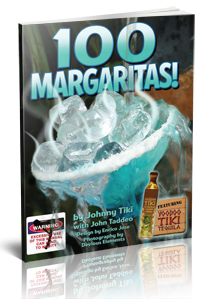Agave is cultivated for six to twelve years before it is refined. Many tequila suppliers state publicly that they allow their own plants to mature for a minimum of 12 years previous to harvest, although in all but the best tequilas this is an untrue marketing publicity stunt not centered upon genuine realities. These brands tequila brands might possibly have a number of more mature agave in their blend although then the balance of their liquid is produced from different less valuable agave of cheaper quality. The result is commonplace ingredients, compared to the legitimate greatest ingredients. These brands assert that they take advantage of the mature bigger agave, and they do, but not exclusively. This half truth and omitted truth is a fraud of the customer. The fact is, more than 90% of the tequilas in the market use agave of 8 years old or less. Agave flavor is also reliant upon growing conditions, a giant challenge for “Estate Growers.” An additional advertising tactic, is saying that Estate Growing is a benefit. Estate Growing is a constraining component in high quality tequila production on account that the tequila label is at this point hitched to its estate agave, as compared to their capability to go right into the free market and buy their wished-for quality. Like wineries, vintages may well vary, so an Estate Grown tequila will probably have good years and unfavorable years. To stop this, estate makers attempt to generate an average tequila, that leaves people with exactly that, an average tequila. The very best tequila choices are most routinely not estate grown. Estate grown tequilas are usually the most mass produced as the size and costs involved with growing necessitates quantity sales. In addition, estate growing is consistently a required evil connected with the need for mass quantity of agave, associated with mass production, not high quality, and unquestionably not the quality of the greatest anejo tequila or extra anejo tequila oftentimes referred to as Three Year Anejo tequila or Extra Anejo tequila.
Despite having to nurture for the very least of six years, and as much as 12, an agave is a single use. It’s not necessarily like an lime tree that definitely will turn out fruits every single year. Consider the struggle of having to plan, seed, cultivate and budget for agave that you is not going to harvest for more than ten years for something you won’t bottle for as long as 15 years. Picture needing to care for and nurture the agaves through their planting to their cropping, quite a few years in the future, without knowing how the market place will change in the interim, but still needing to employ farmers to weed, prune and maintain the crops without knowledge how those agave may come out.
Ripe piñas are the component of the plant that could be put to use for tequila. This is often called the heart (root), or piña (otherwise known as the head, or cabeza), which appears similar to a great pineapple. The agave head gets started existence underground, though quickly forces its way upwards through the surface. A more mature piña continually weighs at the least 80 pounds, though could certainly weigh up to 300 pounds and up. But bear in mind, the vast majority are gathered below One hundred pounds. Boasting concerning agave measurements is one more marketing scam applied by labels to attempt to force the consumer that their tequila is greater quality, sweeter and the higher selling price is justifiable. In actuality, agave advancement is necessary to sweetness but so is selection of production process as well as farming region. The agave highlands are most known for sweet agave, and some substantial plants, above 500 pound piñas have been known coming from the highlands.
Agave collection starts off when the jimador, the agave cultivator – cuts the agave from the ground and starts trimming off the countless spiney and pointed leaves that project from its sugary juicy head. This work is most commonly carried out physically, as opposed to by technology as labor fees in Mexico are usually more inexpensive than technological investment. Hard physical work above technology is a theme that we find in many tequila brands, and plenty of makers try to romanticize their lack of investment in technologies by advertising and marketing concepts like, ”Old Time Methods” . This like a lot of other promotional boasts is done to mask a shortcoming. The best tequilas actually do not make use of “Old Methods.” They employ the most modern-day advancements in tequila producing, while steering clear of the chemical and additive manipulations associated with bringing tequilas developed without modern-day technology, up to snuff.



